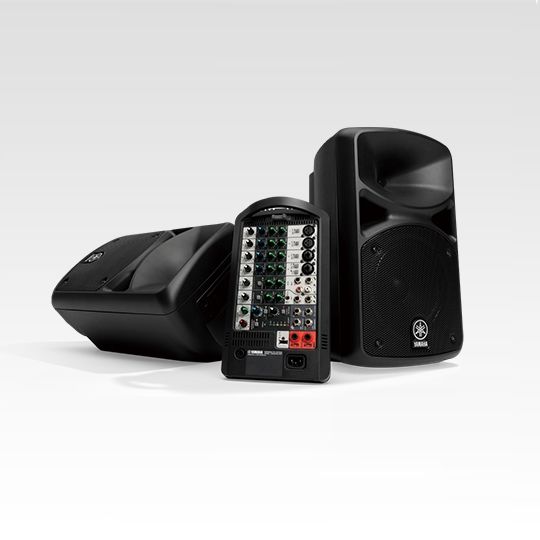G
gene12586
Member
Let's take 2 PA systems:
First let's take this Yamaha StagePas 600i here, which I own:
Specs:

 usa.yamaha.com
usa.yamaha.com
Then let's take this Samson Expedition XP300:
Specs:
 samsontech.com
samsontech.com
So the StagePas is obviously the superior quality system... But I'm wondering how much of that comes fro the mixer vs. the speakers... Let me use a hypothetical example to ask this question:
Let's take two different configurations:
1) Configuration 1: Let's say I use the speakers that first I sing and play some guitar and input to the StagePas mixer which feeds into the StagePas speakers.
2) Configuration 2: Then let's say next I sing and play some guitar and input to the Samson mixer but I feed the signal into the StagePas speakers (instead of the Samson speakers) (I can do this right??)
So my main question is: if using the same speakers (in this case the StagePas speakers, which are superior to the Samson speakers), how much of a difference will using the StagePas mixer vs. the Samson mixer make in sound quality?
And a secondary 2 part question is (total newb question, sorry): Firstly, I take it I can run the mixer from one PA system (in this case, the Samson mixer) into the speakers for another PA system (in this case the StagePas speakers); is that correct? Secondly, assuming that's the case, how commonly is this kind of thing done?
Thanks!
First let's take this Yamaha StagePas 600i here, which I own:
Specs:

STAGEPAS 400i/ 600i - Specs - Yamaha USA
The new STAGEPAS 400i and 600i are the successors of the renowned STAGEPAS 300 and 500 which earned worldwide acclaim as compact, yet high-powered, portable PA systems with exceptional sound quality.
Then let's take this Samson Expedition XP300:
Specs:
XP300 | Samson
The Expedition XP300 is an all-in-one sound system that delivers superior audio quality with quick and easy setup.
So the StagePas is obviously the superior quality system... But I'm wondering how much of that comes fro the mixer vs. the speakers... Let me use a hypothetical example to ask this question:
Let's take two different configurations:
1) Configuration 1: Let's say I use the speakers that first I sing and play some guitar and input to the StagePas mixer which feeds into the StagePas speakers.
2) Configuration 2: Then let's say next I sing and play some guitar and input to the Samson mixer but I feed the signal into the StagePas speakers (instead of the Samson speakers) (I can do this right??)
So my main question is: if using the same speakers (in this case the StagePas speakers, which are superior to the Samson speakers), how much of a difference will using the StagePas mixer vs. the Samson mixer make in sound quality?
And a secondary 2 part question is (total newb question, sorry): Firstly, I take it I can run the mixer from one PA system (in this case, the Samson mixer) into the speakers for another PA system (in this case the StagePas speakers); is that correct? Secondly, assuming that's the case, how commonly is this kind of thing done?
Thanks!
Last edited:
